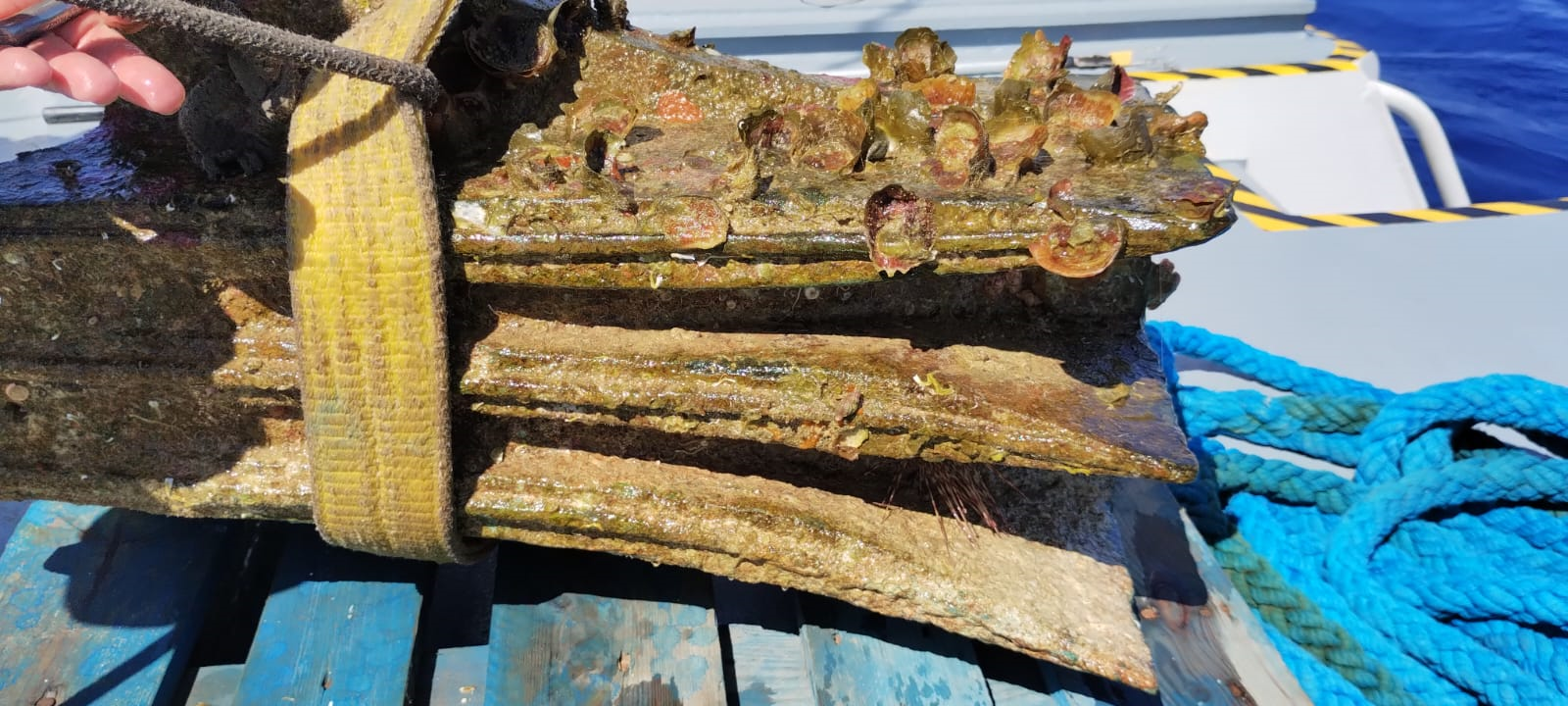In 241 BCE, one of the most decisive battles in ancient Mediterranean history took place off the coast of Sicily, as the emerging Roman Empire defeated its fierce rival Carthage during the Battle of the Aegates. Having spent the past 20 years scouring the seafloor in search of sunken traces of this epic confrontation, researchers have now uncovered a bronze battering ram that would have been used by the Roman navy to destroy enemy ships.
Announcing the discovery in a statement, the Superintendence of the Sea of the Sicilian Region explained that the relic was found at a depth of approximately 80 meters (262 feet), in a stretch of sea between the islands of Levanzo and Favignana, which lie off the west coast of Sicily. The Roman maritime weapon was then recovered using “sophisticated instruments” onboard the research vessel, Hercules.
According to the Superintendence, battering rams of this sort were “deadly weapons of destruction which, when applied to the bow of warships, allowed enemy ships to be rammed and subsequently sunk.” Over the past two decades, 27 similar rostrums have been found in the same stretch of water, along with 30 Roman helmets and two swords.
Archaeologists are now conducting an in-depth analysis of the ancient weapon, which features a decorative relief depicting a Roman military helmet on its front. However, because of the large amount of sea life covering the surface of the bronze rostrum, it has not yet been possible to identify any inscriptions.

Plenty of sea life has made its home on the battering ram.
Image credit: Image credit: Soprintendenza del Mare
The Battle of the Aegates marked the end of the first of the Punic Wars, which were fought between the Romans and the Carthaginians between 264 and 146 BC. The latter had been the dominant force in the western Mediterranean for thousands of years prior to these conflicts, yet as Rome’s influence began to spread across what is now Italy, unrest on the island of Sicily provided the spark for one of the most significant turning points in history.
The Roman victory in the Battle of the Aegates – which was fought on and around the islands to the west of Sicily – was a major blow to Carthage, which never managed to regain the upper hand and was finally dismantled following the Third Punic War. It was this triumph that enabled Rome to emerge as the major force in the region, later expanding its empire in all directions.
Commenting on the recent discovery in a statement sent to IFLScience, regional councilor for cultural heritage Francesco Paolo Scarpinato said that “the seabed of the Aegates… is always a precious source of information to add further knowledge on the naval battle between the Roman and Carthaginian fleets.”
Summarizing the significance of this region, he described the waters between Levanzo and Favignana as “the theater of the battle which established the Roman domination of the Mediterranean”.
Source Link: 2,300-Year-Old Battering Ram From Roman Warship Discovered Off Sicilian Coast